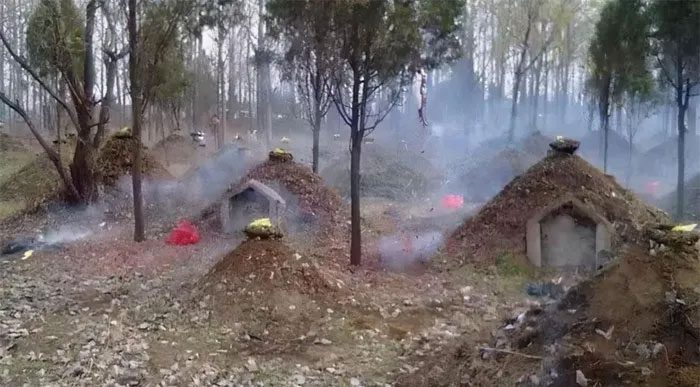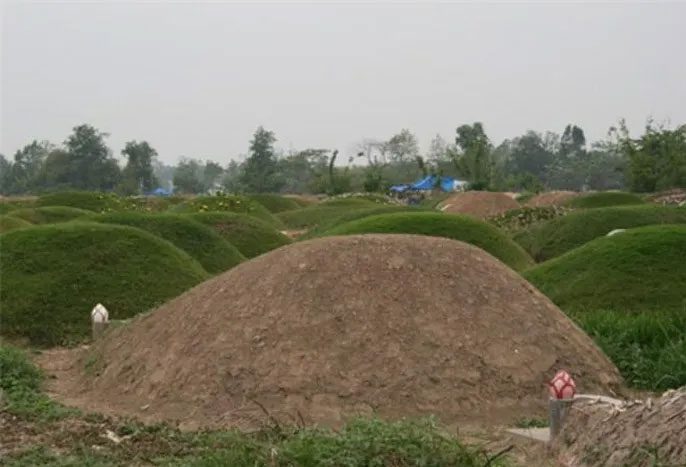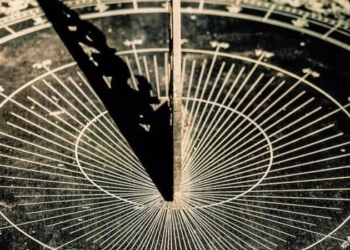Why is there a triangular mound of earth above a coffin buried underground? The reasoning behind this practice showcases the wisdom of ancient people.
China is a country with a long history and rich culture. Many experiences and wisdom have been passed down through generations, forming unique cultural customs that even influence other East Asian countries!
However, with the rapid development of today’s society, many customs have changed. For example, regarding funeral traditions, in ancient times, people focused on “burial,” while nowadays, many places have opted for cremation to conserve land resources.
In traditional Chinese funeral culture, when a person dies and is buried, the coffin is naturally placed underground, but above the surface, a small triangular mound of earth is constructed. This burial custom is similar to practices in Vietnam.

The coffin is buried below, while a triangular mound of earth is formed on the surface. (Image: Sohu).
Many people may find this familiar, but few know that behind this detail lies a meaningful story that reflects the intelligence of ancient people.
In the Book of Rites – one of the Five Classics of Confucius, there is a story about Confucius’s father passing away when he was very young. As Confucius grew up, he wanted to pay his respects to his father but searched for a long time without finding his father’s grave.
Eventually, with the help of villagers, Confucius found his father’s tomb.
To make it easier to identify the grave for future visits, Confucius had a small mound of earth piled on his father’s grave and planted many trees around it.
This could be the origin of burial mounds from ancient times! Later, when someone passed away, a small mound of earth would be built, not only to make it easier for people to identify and locate the grave but also as a signal for others to respect the graves, avoiding careless trampling or digging in the area for construction.

Building a small earth mound over a grave helps people recognize and locate it more easily.
Notably, arranging graves into small triangular mounds also serves very practical purposes.
- When it rains, if the grave surface is flat, it can easily accumulate water, which over time can seep down and corrode the coffin underground.
- However, if there is a triangular mound on top of the grave, when rainwater comes, it flows down from the peak of the triangle to the surrounding areas below, reducing the likelihood of water accumulation.
This resembles the image of a roof – commonly seen in countries and regions with humid climates and heavy rainfall. This design allows rainwater to drain quickly.

Commonly seen graves.
From this, we can see just how wise ancient people were, as reflected in their burial practices.
The image of the triangular grave mound is very familiar, but the establishment of this custom required time and the accumulation of experience!




















































